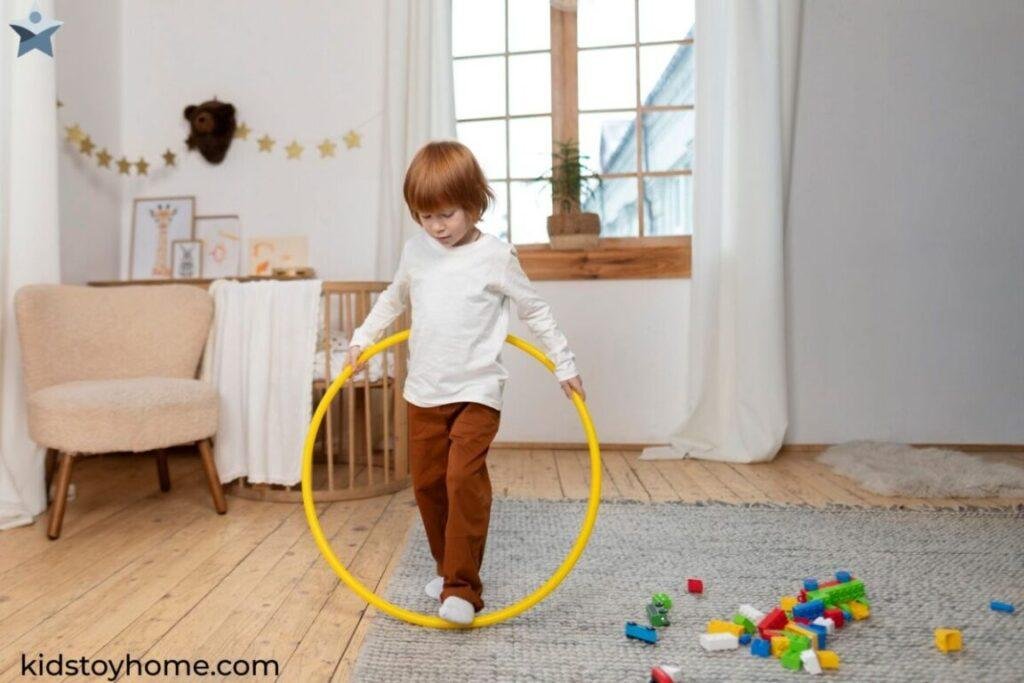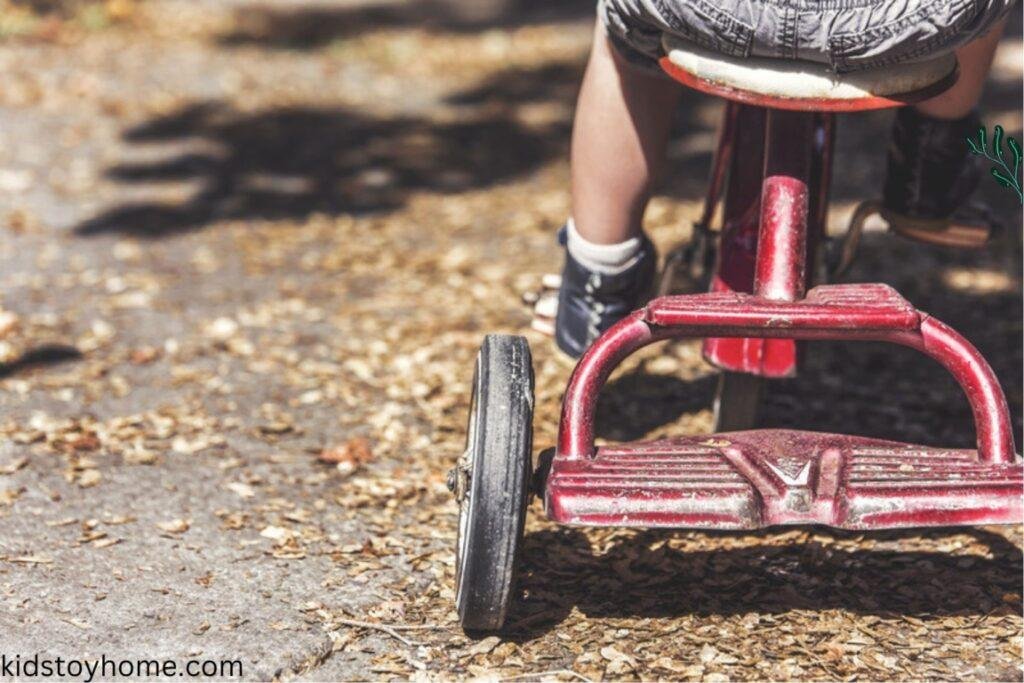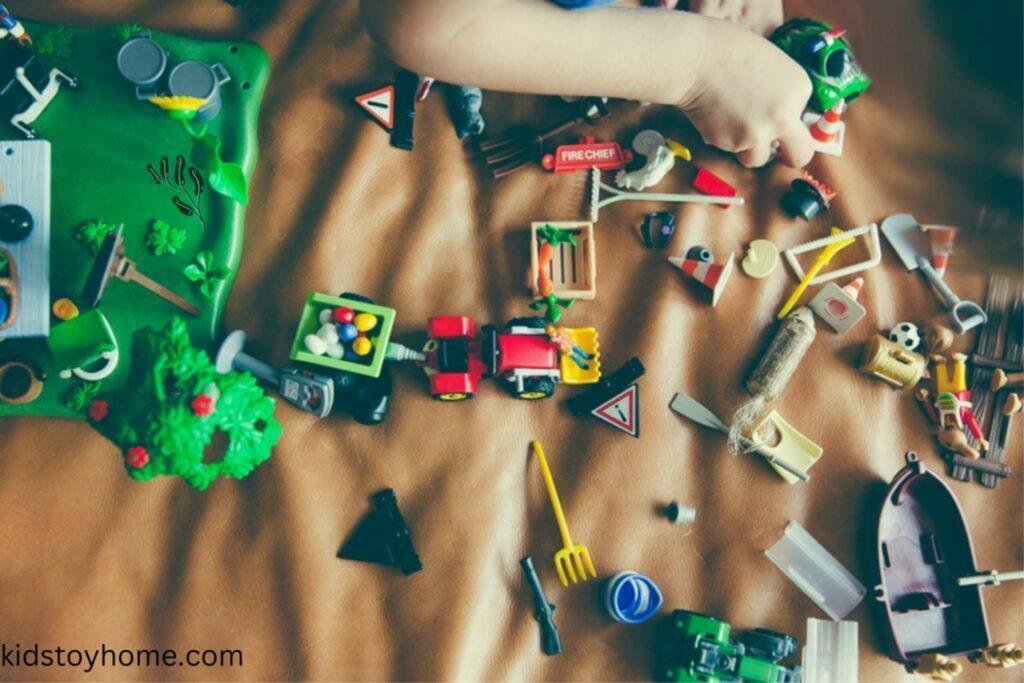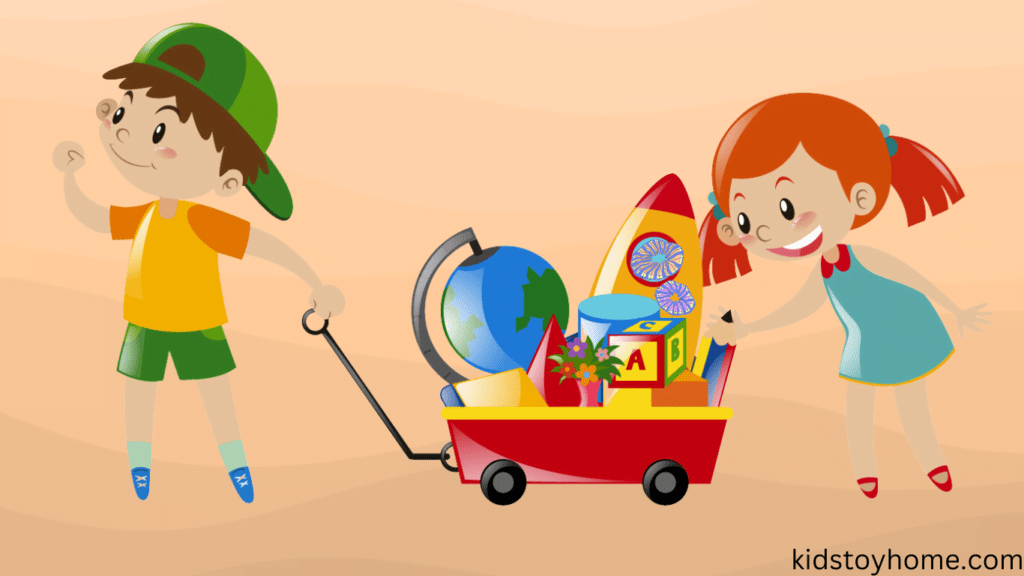
Kids usually start to lose interest in toys around the ages of 8 to 12. They become more interested in activities like sports, video games, and hanging out with friends.
Understanding the changing development of your child and offering them a safe environment in which to play will help keep them engaged throughout each stage of childhood.
This article will explore these factors and provide insights that What Age Do Kids Stop Playing with Toys?
What the Experts Say
Experts in child development and psychology concur with the significance of play in different stages of growth. They emphasize that it’s not merely about amusement or passing the time. The types of toys and play methods children engage with are instrumental in shaping their cognitive, emotional, and social development.
For instance, Dr. Laura Markham, a renowned clinical psychologist, suggests that open-ended toys, which can be used in various ways depending on the child’s imagination, foster creativity and problem-solving skills.
Similarly, Dr. Peter Gray, a research professor at Boston College, believes that play is a crucial tool for children to learn how to handle their emotions and interact with others.
Therefore, it is essential for caregivers to understand the evolving play needs of their children and to provide an environment that supports these needs. With the right guidance and resources, play can be an enriching experience that supports a child’s overall development from infancy through adulthood.
Signs of Transition: When Kids Start Moving Away from Toys
Several indicators suggest that a child is transitioning away from toys and exploring other activities.
Increased Interest in Social Interactions
When kids begin to prioritize spending time with friends and participating in group activities, it may indicate a waning interest in solitary play with toys.
Academic and Extra-Curricular Involvements
As children advance in their academic journey, they might become more involved in school-related activities, leaving less time for toy play.
Shifting Focus to Digital Entertainment
The allure of screens and digital entertainment can become strong as children grow older, diverting their attention from traditional toys.
When Do Kids Stop Playing with Toys?

As parents, we all want our children to grow up happy and healthy, so the transition from playing with toys to preferring other activities can be challenging. While every child is different, and so are their interests, there’s no one clear-cut answer. These new interests are often more exciting and difficult for them.
As kids grow, their friends influence their choices a lot. They want to fit in and do what their friends are doing. This often means choosing more grown-up activities, like team sports or playing video games together, instead of playing with traditional toys.
As children get older, they look for more complex and exciting activities. Games that make them think, like board games or puzzles, become more fun. These activities match their growing brains and help them learn new skills.
The Age of Exploration
Children’s age of exploration is a time of great discovery and play. They engage in imaginative play with building blocks and puzzles, which improves their fine motor skills and hand-eye coordination. Video games add social interactions and peer influence, enhancing creativity, cognitive skills, and emotional intelligence.
Developmental Benefits of Toy Play
Toy play offers many developmental benefits for children. It enhances gross motor skills, physical activity, and coordination, essential for brain function and self-esteem. Activities like building with blocks and solving puzzles improve fine motor skills and hand-eye coordination, fostering critical thinking, creativity, and problem-solving.
When do kids stop playing with toys? Changing Tides of Interest

In middle childhood, children’s interests start to shift significantly. They often move from imaginative play and building blocks to activities influenced by technology, like video games. These games, especially multiplayer ones, provide social interactions and peer influence. Playing video games can improve gross motor skills, coordination, and self-esteem.
However, traditional play with puzzles still holds relevance for developing fine motor skills and hand-eye coordination. This stage also sees a rise in abstract thinking, problem-solving, and creativity, impacting overall brain function. The significance of these changes lies in their implications for child development, character development, and emotional intelligence.
Shift in Priorities and Interests
As children grow, their priorities and interests shift. They often move from imaginative play and building blocks to activities like video games. This shift is influenced by social interactions and peer influence. Video games, especially multiplayer ones, offer a new context for social engagement.
Technology’s Influence
Technology plays a significant role in children’s changing interests. Video games provide social interactions and peer influence, primarily through multiplayer modes. These games improve fine motor skills, hand-eye coordination, and abstract thinking. Technology’s significance lies in its impact on creativity and innovation.
Social Dynamics and Peer Influence: When do kids stop playing with toys?
Social dynamics and peer influence play a significant role in children’s activities. Friends often influence their interest in video games and multiplayer technology. These games offer social interactions that boost self-esteem and make children feel included. Peer influence can also lead kids to try new activities and develop new interests.
Cognitive Development and Problem-Solving

Cognitive development and problem-solving skills grow through various activities. Playing with puzzles and building blocks enhances critical thinking and creativity. These toys improve fine motor skills and hand-eye coordination.
Video games also contribute by enhancing abstract thinking and adaptability. These activities are relevant because they impact brain function and cognitive skills. Balancing different types of play is essential for overall child development.
Pre-Adolescence: The Toy vs. Tech Dilemma
In pre-adolescence, kids face the toy vs. tech dilemma. They are drawn to video games due to peer influence and social interactions. Multiplayer games offer excitement and boost self-esteem.
Traditional toys like building blocks and puzzles are still important. These toys improve fine motor skills, hand-eye coordination, and creativity. The context of this dilemma has significant implications for brain function and cognitive skills. Balancing play with technology and traditional toys is crucial for child development and emotional intelligence.
Embracing the Diverse Paths of Play

Embracing the diverse paths of play is essential for a child’s development. Video games, including multiplayer options, offer unique social interactions and peer influence that can boost self-esteem and coordination. At the same time, traditional play with building blocks and puzzles enhances fine motor skills, hand-eye coordination, and creativity.
Both games are significant in their context, impacting cognitive skills, problem-solving, and brain function. By recognizing the relevance and implications of various play forms, we support overall child development, including emotional intelligence and adaptability. The themes of different play experiences highlight their role in fostering critical thinking and character development.
Importance of Understanding Children’s Play
Understanding children’s play is crucial for their growth and development. Whether it involves video games, building blocks, or imaginative scenarios, play impacts many areas of a child’s life. Video games and technology provide social interactions and peer influence that boost self-esteem and coordination.
Continued Impact of Play on Growth and Development
The continued impact of play on growth and development is profound. Play activities, such as video games and physical activities, enhance gross motor skills and brain function. Meanwhile, imaginative play with building blocks and puzzles fosters abstract thinking, creativity, and adaptability. These activities are relevant because they can support problem-solving and critical thinking.
Age 0-2: Exploring the World Through Play
Children in this age range are still learning and developing their motor skills, so they need toys that help to build these. Toys like rattles, blocks, activity boards, and shape sorters will be ideal for 0-2-year-olds as they can explore them safely.
These toys will also help children learn to recognize shapes, colors, and sounds while stimulating their minds. As children in this age range tend to be quite active, tricycles, ride-ons, and any toys that promote physical activity are also great options.

Age 3-4: Building Cognitive Skills with Toys
Children’s cognitive skills are beginning to develop at this stage, and they’re starting to understand the world around them.
So, toys that help foster this development are ideal. Puzzles, Building Blocks, and simple board games are all great options as they can help children learn how to problem solve, gain better hand-eye coordination, and practice social interactions.
Other toy options for this age group include baby dolls and action figures, which can help children explore the world of make-believe while developing their imaginations.
Age 5-7: Developing Imaginary Play
Children are starting to understand how the world works by this stage, and their imaginations are running wild. So, toys that help children explore these ideas are great options. Games that require strategies, such as chess or checkers, can be fun while also helping them develop problem-solving skills.
Age 8-12: Nurturing Creativity and Critical Thinking
Children’s cognitive abilities have significantly advanced at this age, and their ability to comprehend more complex concepts has developed.
They are more socially conscious and engage in more intricate, strategic games. Toys and activities that cater to this age group include science kits, robotics, craft sets, race cars, and strategy-based board games.
These toys amuse and foster creativity, critical thinking, and problem-solving skills.
Additionally, kids at this age might be drawn to digital games and activities that encourage coding and programming skills. These tools can build a foundation for future learning in technology-related fields.
Age 13-18: Fostering Independence and Life Skills
This age group is transitioning to adulthood; they prefer activities that align with their growing interests and stimulate their intellect. They often shift towards hobbies that build life skills and independence.
Traditional ‘toys’ often give way to more sophisticated gadgets, musical instruments, art supplies, and literature. Computer programming kits, video games, 3D puzzles, and complex model sets may also be interesting. It’s also a time when many teenagers embrace digital media and online gaming.
While these may not be ‘toys’ traditionally, they can offer opportunities for creativity, strategy, and collaboration. It’s important to remember that play, in its many forms, continues to be a vital component of development, even into the teenage years.
Age 19+: The Role of Toys in Adulthood

As adults, the concept of play continues to be essential, although it often takes on a different form. Rather than toys, adults engage in recreational activities, hobbies, and interests that stimulate their minds, offer relaxation, and provide a sense of accomplishment.
Puzzles and brainteasers, model kits, DIY crafts, or electronic gadgets can serve as ‘adult toys,’ offering entertainment and cognitive stimulation. Physical activities, like sports or outdoor adventures, can also provide the joy of play while promoting overall health.
Moreover, by embracing the digital realm, many adults engage in online games, virtual reality experiences, or coding challenges that foster problem-solving skills.
As we age, it becomes increasingly important to continue incorporating play elements into our lives, allowing us to keep our minds active, relieve stress, and add joy to our daily routines.
The Psychological and Societal Impact of Outgrowing Toys

Transitioning away from traditional toys is a natural part of growing up and indicates a shift towards more complex forms of play and learning. This transition can have both psychological and societal ramifications.
Psychologically, moving away from toys often corresponds with increased cognitive abilities and emotional maturity. Societal norms and peer influences also play a pivotal role in this transition.
As children age, they are more likely to be influenced by societal expectations and pressures, which can impact their toy preferences and play habits.
This transition can influence a child’s social skills and understanding of societal roles and expectations. In conclusion, it’s crucial to remember that the objective of play, regardless of age, is to stimulate growth, learning, and enjoyment.
As caregivers, supporting our children’s evolving interests and providing diverse play opportunities is critical for holistic development.
Strategies for Encouraging Play in Different Age Groups
Ensuring that play remains a fun and engaging part of a child’s life, regardless of age, requires understanding, creativity, and flexibility. Here are a few strategies for encouraging play in different age groups:
1. 0-2 years: Encourage sensory play. Toys that stimulate the senses, such as rattles and musical and textured toys, can help young children explore their environment.
2. 3-4 years: Introduce problem-solving toys. Simple puzzles and construction sets can help children learn to think critically and solve problems.
3. 5-7 years: Foster imagination. Role-playing games, dolls, action figures, Building Robots, and arts and crafts materials can help children develop their creativity and imagination.
4. 8-12 years: Promote intellectual growth. Challenging board games, science kits, race cars, and books can stimulate intellectual growth and curiosity.
5. 13-18 years: Support independent interests. Allow teenagers to explore their interests through musical instruments, art supplies, computer programming, or literature.
6. 19+ years: Reinforce the importance of lifelong play. Encourage adults to engage in puzzles, crafting, tech gadgets, and physical activities to stimulate the mind and promote relaxation.
By adapting the ways we encourage play as our children grow, we can help them continue to reap the benefits of play throughout their lives.
Encouraging Play Beyond Traditional Toys

Beyond the realm of traditional toys, there are a plethora of opportunities to stimulate a child’s imagination and learning.
Experiences such as family trips, nature walks, and visits to science centers, museums, or zoos can provide rich, educational, and engaging forms of play.
Incorporating everyday household items into playtime can also foster creativity, as children can transform these objects into imaginative play elements – a cardboard box becomes a spaceship, and a blanket transforms into a superhero cape.
Likewise, technology and interactive media offer a new dimension to play, with educational apps and games designed to cultivate learning, creativity, and problem-solving skills. However, it’s important to balance screen time with physical activity and traditional forms of play for a well-rounded development.
Remember that play doesn’t always entail using a physical object or toy; the key is to foster an environment that encourages exploration, creativity, learning, and, above all, fun.
Conclusion
In conclusion, transitioning from traditional toys to other leisure activities is normal for growth and maturation. Influenced by a child’s development and societal factors, this process provides opportunities for enhanced cognitive abilities, emotional maturity, and social understanding.
As parents or caregivers, we facilitate this transition, offering diverse play and learning possibilities that suit our child’s evolving interests. Whether it’s sensory toys for toddlers, role-playing games for schoolchildren, computer programming for teenagers, or DIY crafts for adults, ensuring the continuation of play throughout life stages is fundamental. Indeed, toys and play morph with the child, serving as tools of imagination, education, relaxation, and even social bonding.
Hence, understanding and supporting play’s dynamic nature is key to nurturing happy, healthy, and well-rounded individuals.
FAQs about What Age Do Kids Stop Playing with Toys?
At what age do girls stop playing with toys?
The age at which girls stop playing with toys can vary significantly from one individual to another. Generally, as girls approach adolescence, around 11 to 13 years old, they may show less interest in traditional toys.
However, it is essential to remember that interests and preferences differ greatly, and some girls may continue to enjoy toys beyond this age.
At what age do kids stop playing with animal toys?
No specific age at which kids universally stop playing with animal toys. Children’s interests and developmental stages influence their toy preferences. Animal-themed toys often remain appealing to kids up to the age of 10 or beyond, especially if they have a passion for animals and nature.
At what age should a boy stop playing with toys?
There is no set age at which boys should stop playing with toys. Like girls, boys progress through different developmental stages, and their toy preferences will change accordingly.
It is common for boys to continue playing with toys until early adolescence, around 12 to 14 years old. However, some boys may be interested in specific toys well into their teenage years.
How can parents support children during this transition?
Parents can play a crucial role in supporting children as they transition away from traditional toys. It is essential to respect their changing interests and encourage them to explore new hobbies and activities.
Engaging in open and supportive conversations about their interests and desires can help parents understand their child’s evolving needs.
Offering a variety of experiences and learning opportunities, such as trying out new sports, arts, or hobbies, can further facilitate this transition.
What are some alternative play options for older kids?
For older kids, numerous alternative play options cater to their changing interests and cognitive development. Some of these options include:
- Board games and strategy games
- Creative pursuits
- Outdoor activities
- Building and construction sets
- Role-playing games
- STEM-related toys
The key is to provide diverse options and allow kids the freedom to explore their interests and passions while embracing the joy of play in new and exciting ways.





